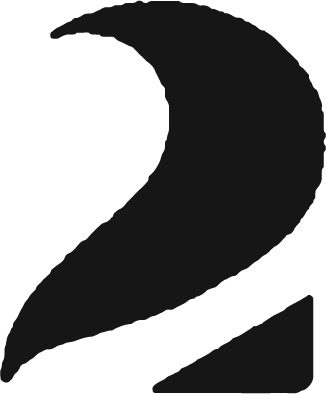デザイン思考には大学院に進学してから触れる機会が多くなり、「クリエイティブな問題解決の手助けをしてくれるフレームワーク」であるというところくらいまでは定義付けができている状態だ。もともとは政治学者のHerbert A. Simonや、エンジニアのRobert H. McKimによって、Design as a way of thinking(考える手段のためのデザイン)として生み出された概念らしく、Robertの著書である『Experiences in Visual Thinking』 (1972, Brooks/Cole)では、視覚的な情報がクリエイティブな思考において寄与しうる多大な貢献について触れていた。毎度スケッチや参考画像で壁が散らかってしまう自分としては、同意せざるを得ない。つまりデザイナーではない人がデザイナーのように考えてみる(言い換えると、誰もがよりクリエイティブな発想をする)ためには、視覚的な情報が大きな助けになるということだと自分は理解している。
現在のデザイン思考は時を経て形を変え、5つの段階(共感→定義→発想→プロトタイプ→テスト)で表されることが多くなっている。はじめてこのダイアグラムを見た時、自分や自分の周りにいた人たちが無意識にやっていた言語化できないプロセスが、なんともわかりやすい形に落とし込まれていたことに感動し、それからは至る所で多くの人々がこの方法論を取り入れているのを見てきた。しかし物事というものは、広がると同時に誤認のリスクも高まってしまうもので、自分が共感を禁じ得なかった当初の哲学から、今日のデザイン思考は離隔されてしまい、なんとも違和感を覚える現象に変異しつつあると感じている。自分を含め多くのデザイナーがこのように感じてしまうのは、おそらく彼らが日常的に行っている「デザイン」という行為と「デザイン思考」の間に、看過できない溝が生まれてしまったからなのだと思う。
その溝を生み出している因子は何なのかと考えると、先に挙げた5つのステップが理想的なデザインを生み出すためのレシピ(方法論)になってしまっていることに気付いた。これらのステップは飽くまでデザイナーが持っている哲学を大まかに表現したもので、それぞれの段階には、それを執行する者、または執行する対象に依存した特有の方法論が内包されている。結局のところ、取り組んでいる課題に対して(5つの段階で構成された哲学を拠り所に)、各々が柔軟に向き合っていく必要があるという部分は、なにかを生み出すという行為において変わってはいけない部分ではないだろうか。
さらに、作り手の視点や批評が含まれていないということも挙げられる。デザインは問題解決であるから、作り手の意思が介在してはいけないという主張もあるが、今のところ自分はこれに賛成することはできない。デザインを学ぶということは技術を学ぶことであると同時に、目を養うことでもある。その目を以って、果たして今作り上げているものは理に適っているか、美しいか、ということを絶えず評価していく。最近はこの批評こそが、いちデザイナーとしての役割を最も発揮できる場所であり、クリエーションにおいても最重要な部分ではないかと考えている。
デザイン思考に関しては今後も様々な議論が繰り広げられるだろうし、この議論がどのような方向へと展開していくのか、楽しみにしつつ自分でも思考を深めたいと思った。もちろん、この主張はビジュアルをデザインする個人としてのバイアスが少なからずかかっていて、他の領域(UI/UX, プロダクト, サービス)ではまた大きく異なる前提を踏まえた意見が生まれると言うことも理解している。しかしその中である程度共通する教訓を挙げるとするならば、それは当初主張された「思考と視覚の強い関係性」に回帰し、感覚の重要性を忘れずにものづくりに従事するということなのかもしれない。
I've been touching the concept of design thinking after I started my graduate school, and I've defined it as "a framework that helps solve problems." Originally this concept was created as "design as a way of thinking" by political scientist Herbert A. Simon and engineer Robert H. McKim. Robert's book, Experiences in Visual Thinking. (1972, Brooks / Cole) mentions the tremendous contribution visual information can make in creative thinking. As a person fills up walls with a bunch of sketches and references when thinking, I have to agree with that theory. Visual information can be a great help for non-designers to think like designers (in other words, to enable everyone to generate ideas in more creative ways), this is my understanding.
The current design thinking has changed its shape over time and is often explained in five stages (sympathize → Define → Ideate → Prototype → Test). When I saw this diagram for the first time, I remember that I was impressed that the processes that the people around me and I were doing unconsciously and could not be verbalized were transformed into a very easy-to-understand form. Since then, I have seen many people adopt this methodology everywhere. However, things spread, and the risk of misinterpretation increases at the same time. Today's design thinking is separated from the original philosophy that I could not fully agree with and has become a phenomenon that feels a bit strange. Many designers, including myself, feel that way probably because there has been an unnatural gap between their daily activities of "design" and "design thinking".
Considering what factors are creating the gap, I realized that the five steps have become recipes (methodologies) for creating an ideal design. Each of these steps is a rough expression of the philosophy that designers have. Each step involves particular methods depending on who executes it or what they try to solve. After all, the part that needs to be able to face each problem flexibly (based on the five stages) is the part that must remain the same in the act of creating something.
Besides, it does not include the creator's perspective or criticism. Some argue that design is a problem-solving and that the intention of the creator shouldn't be included, but I'm afraid I have to disagree with it for now. Learning design is not only learning skills but also developing keen eyes on what we make. With that, we constantly evaluate whether what we are making now makes sense or even is beautiful. Recently, I started thinking that criticism is the place where I can best play my role as a designer and is the most essential part of creation.
There will be lots of discussions on design thinking in the future, and I will deepen my own thinking while looking forward to what direction this discussion would go. Of course, I understand that my assertion is somewhat biased as one from an individual who designs graphics and could be totally different in other areas (UI / UX, industrial, services) based on their criteria for making great products. However, one of the lessons in common among those areas that I can take away from design thinking is to return to the initial concept of "strong relationship between thought and vision evidence" and make beautiful things without forgetting the importance of human senses.
